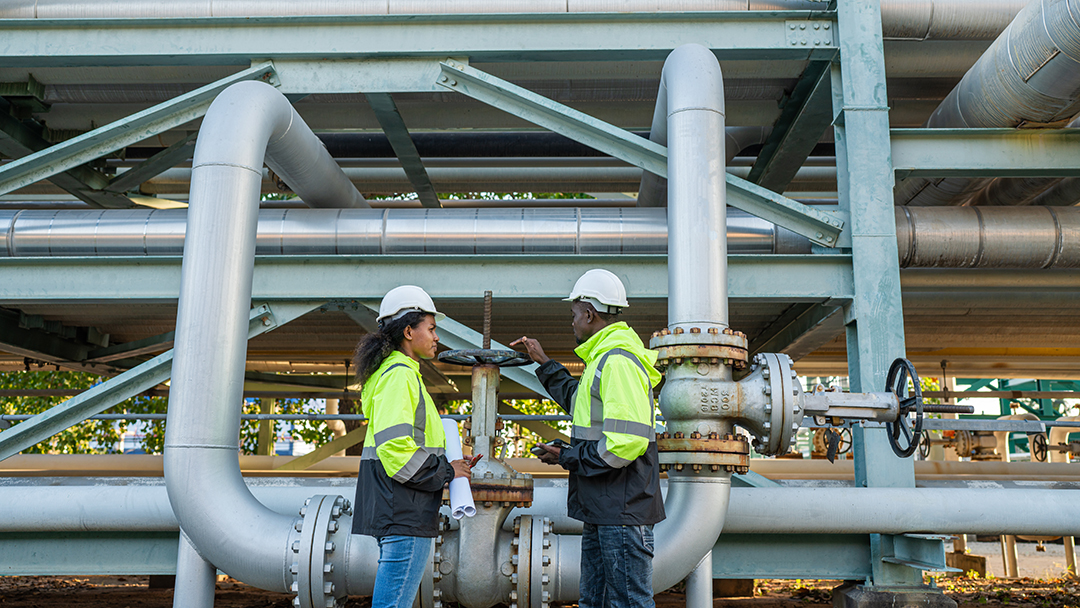In industrial settings, pipelines serve as the lifeblood of operations, transporting vital resources such as water, gas, and chemicals across vast distances. At the heart of these systems, HDPE (High-Density Polyethylene) pipe fittings play a critical role, linking segments with precision and strength to maintain uninterrupted flow and structural integrity. Selecting the right HDPE pipe fittings is not merely a technical decision but a foundational element that influences the safety, reliability, and longevity of the entire infrastructure. With the right choice, businesses can ensure robust and cost-effective pipeline systems capable of withstanding environmental stresses and heavy-duty applications.
What are High-Density Polyethylene Pipe Fittings?
HDPE pipe fittings, made from high-density polyethylene, are key parts that connect sections of HDPE pipes used to move fluids and gases. Known for their strength and ability to resist damage from the environment, these fittings are widely used in water systems, gas lines, sewage, and industrial pipelines.
HDPE fittings are durable and handle high pressure well, making them suitable for harsh conditions. They come in various forms—such as elbows, tees, and reducers—allowing them to fit different pipeline designs. Easy to install using methods like heat fusion, these fittings create tight, leak-proof connections, ensuring reliable and long-lasting performance.
The Advantages of Using HDPE Pipe Fittings
Choosing HDPE pipe fittings brings a range of benefits that address both practical needs and long-term value in pipeline systems. Engineered for strength and flexibility, these fittings are designed to handle challenging conditions and a variety of applications, from water distribution to gas pipelines. HDPE fittings have become a preferred choice in many industries because they balance durability with ease of installation, all while remaining cost-effective. These key advantages make HDPE fittings a smart choice for industries seeking dependable, long-lasting solutions.
Here are some of the main benefits of HDPE pipe fittings:
- Durability: HDPE fittings resist corrosion, impact, and abrasion, providing a long service life even in tough conditions like industrial sites and outdoor environments.
- Strength: Built to endure high pressure, HDPE fittings work well in pipelines that carry heavy loads, such as water distribution and large-scale fluid systems.
- Resistance to Environmental Stressors: With their strong resistance to UV radiation, chemicals, and temperature changes, HDPE fittings are reliable in both outdoor settings and chemical transfer systems.
- Easy Installation: HDPE fittings require minimal tools for installation and connect easily through heat fusion or electrofusion, which makes them ideal for remote or restricted areas.
- Cost-Effectiveness: Compared to metal alternatives, the cost of HDPE fittings is more affordable at the outset. Additionally, these fittings require less maintenance than metal fittings, which reduces long-term costs significantly.
An HDPE Pipeline Primer: Breaking Down Each Fitting by Type
HDPE pipe fittings are indispensable in connecting high-density polyethylene pipes that transport water, gas, sewage, and chemicals. The right fittings ensure durability, efficiency, and leak-free performance across industries. With various shapes, HDPE fittings enable customized pipeline layouts, from directional changes to branching and endpoints. This HDPE pipe fittings list outlines key types and their roles in building efficient, adaptable pipeline systems.
| HDPE Pipe Fitting | Description |
| Elbows | Used to change the direction of a pipeline; available in 45° and 90° angles for flexible routing around obstacles. |
| Tees | Allows for splitting or combining flow within a pipeline, used to create branches or distribute fluids and gases. |
| Reducers | Adjusts pipe size within a system, either expanding or reducing diameter to match varying flow requirements. |
| Couplings | Joins two sections of a pipeline, providing a secure, leak-proof connection ideal for repairs and extensions. |
| Flanges | Provides a flat surface for bolting sections together, suitable for systems that require disassembly for maintenance. |
| End Caps | Seals off the end of a pipeline, preventing leaks and contamination at terminal points. |
| Saddles | Connects smaller pipelines to a larger main line, allowing for the addition of branches or auxiliary lines. |
This HDPE pipe fittings list provides an overview of essential components that enhance the flexibility, durability, and efficiency of HDPE pipeline systems, ensuring smooth operation across various industrial applications.
When and Where To Use HDPE Pipe Fittings
Due to their durability and adaptability, HDPE pipe fittings are widely used in various industrial applications, including:
- Water Distribution Systems: Ideal for transporting large volumes of water over extended distances, HDPE pipe fittings are commonly used in municipal water distribution.
- Sewage Systems: Resistant to chemicals and abrasion, HDPE fittings are suitable for pipelines handling wastewater and sewage.
- Gas Distribution Systems: Designed for high-stress environments, HDPE fittings are well-suited for pipelines transporting gases such as natural gas and propane.
- Mining and Industrial Applications: HDPE fittings are also used in slurry pipelines and chemical transfer systems due to their chemical resistance and durability.
Are Your Fittings Compatible? Getting the Right Fit with HDPE Pipe Fittings
Ensuring compatibility between HDPE pipes and fittings is important to create a strong and leak-free pipeline. Incompatible fittings can result in weak joints that cannot withstand pipeline pressure, leading to potential leaks and system failures. When selecting HDPE pipe fittings, it’s important to match material properties and dimensions with the HDPE pipes in use.
Installation Techniques: Proper installation methods like butt fusion, electrofusion, and socket fusion are necessary to form secure, long-lasting joints. In each case, trained professionals must handle the installation to avoid issues related to improper alignment or sealing.
Best Practices for Proper HDPE Pipe Fittings Installation
Proper installation of HDPE pipe fittings is key to achieving an efficient and durable pipeline system. Adherence to best practices during installation helps prevent leaks, extends the pipeline’s lifespan, and ensures compliance with industry standards. Important installation considerations include:
- Use Qualified Professionals: Installation should always be conducted by trained technicians to avoid joint misalignment, potential leaks, and structural failures.
- Follow Manufacturer’s Guidelines: Each fitting has unique requirements for pressure, temperature, and fusion methods, so closely adhering to the manufacturer’s instructions is essential.
- Compliance with Local Codes: Installation procedures must also meet local and national standards for safety and environmental protection, especially in gas and chemical transport systems.
Choosing the Right HDPE Pipe Fittings Supplier For Your Needs
The supplier you choose for HDPE pipe fittings can greatly impact the overall success of your project. Reliable suppliers offer consistent quality, ensuring that all fittings meet stringent industry standards. They also provide access to a comprehensive HDPE pipe fittings list, giving you the flexibility to find fittings that meet your project’s specific requirements.
When evaluating an HDPE pipe fittings supplier, consider factors such as availability, quality assurance, and customer support. A reputable supplier can assist with technical advice, product selection, and prompt order fulfillment, all of which help in maintaining uninterrupted project timelines.
Coastal Resource Group as Your Partner for HDPE Pipe Fittings
When reliable HDPE pipe fittings are important, Coastal Resource Group is a trusted partner. With fast delivery and 24/7 availability, we ensure seamless project execution for clients across multiple industries. Here’s why clients rely on us:
- Quick Delivery to minimize project delays with rapid shipping options.
- Comprehensive Inventory including HDPE pipes, Pipe valves and fittings, fusion machines, welding supplies, PPE, and more.
- 24/7 Support with round-the-clock assistance for immediate supply needs.
We proudly serve a range of industries, including Chemical Processing, Construction, Food and Beverage, Mining, Oil & Gas, and Water Treatment Facilities, providing customized solutions to meet each sector’s unique demands.
Ready to keep your projects running smoothly? Connect with Coastal Resource Group today for reliable, high-quality industrial solutions.


